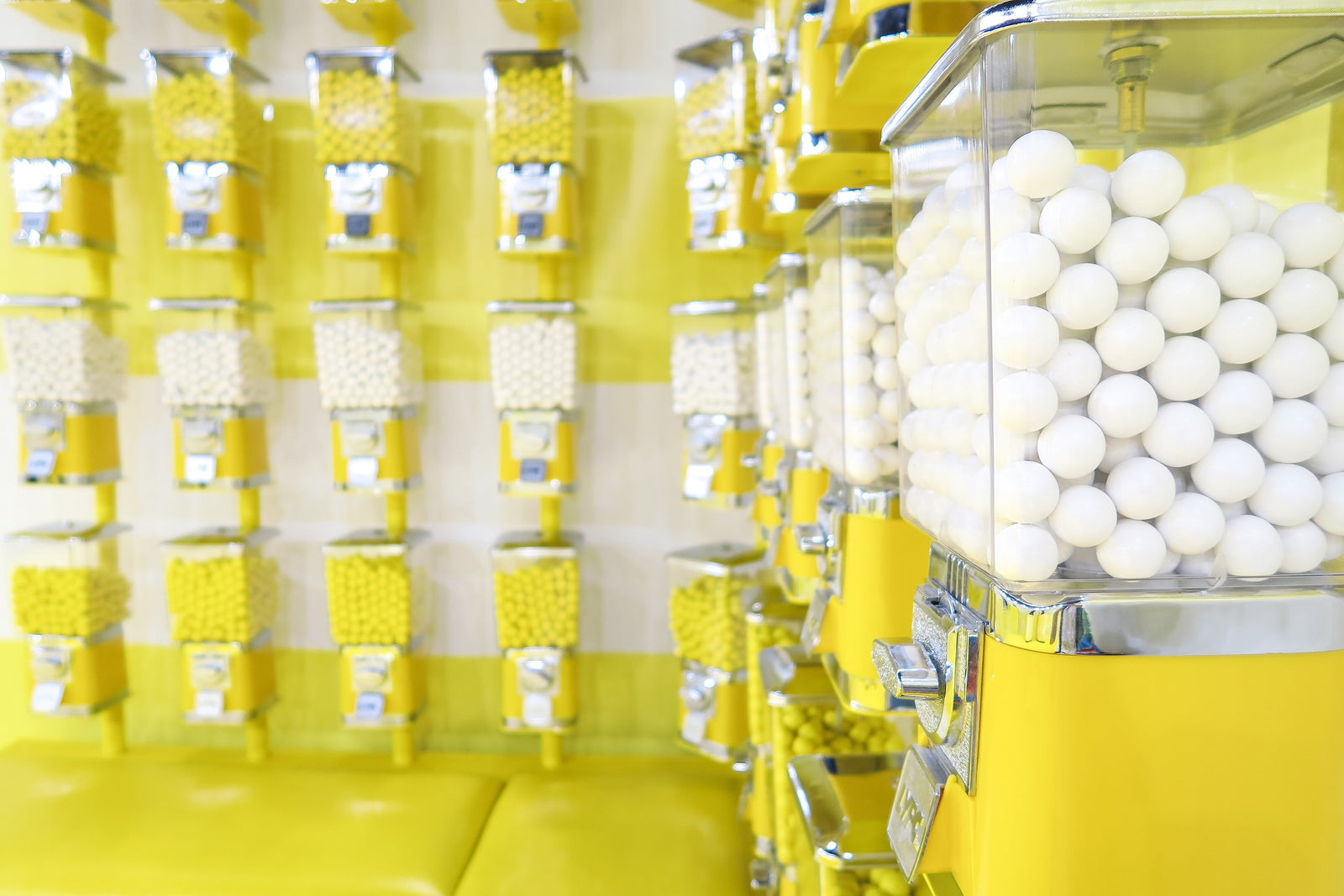🚚 FREE USA SHIPPING ON ORDERS OVER $30! INTERNATIONAL SHIPPING AVAILABLE.
🚚 FREE USA SHIPPING ON ORDERS OVER $30! INTERNATIONAL SHIPPING AVAILABLE.
The history of gum goes way back
by Mark Miller 4 min read

Photo by Karina Miranda on Unsplash
The history of chewing gum advanced from chewy substances found in nature thousands of years ago, to chicle centuries ago in Central America, to mid-19th century Maine where the modern product was first mass produced in a factory.
The gum of centuries and millennia ago would not have been like what we chew today. In fact, neither was the stuff of the 1840s and '50s.
There is some archaeological evidence that people in what became Northern Europe chewed birch bark tar as long ago as 9,000 years. They may have enjoyed it, but they may also have been trying to relieve toothaches.
In Central America, the Maya people and the Aztecs chewed chicle, which comes from the sapodilla tree. Anthropologist Jennifer P. Mathews, who wrote the book Chicle: The Chewing Gum of the Americas, said they were trying to quench their thirst and fight hunger.
As in some modern societies, there were rules among the Aztecs about who could chew it in public. Single women and children could, but married women and widows had to use it privately to freshen their mouths, and men could do so only in secret to cleanse their teeth.
The first chewing gum factory
That first gum factory in the early 1850s in Portland, Maine, produced gum from spruce tree resin by boiling it. The innovator, John Curtis, cut the boiled resin into strips and coated them in cornstarch to keep them from sticking together.
He had gotten the idea from American Indians, who also chewed spruce tree resin. European settlers picked up the practice, until Curtis started producing the first commercial gum from resin in the late 1840s. He made history when he founded his factory a few years later.
The spruce tree resin gum didn't taste very good, and it became brittle while chewing, says an article on History.com [1]. Curtis and other gum makers then tried paraffin wax, but that didn't last either.
But the idea of commercially made chewing gum took hold, and others followed Curtis' suit. Finally, by the 1890s, there were many gum manufacturers.
The first commercially viable gum
How did the first commercially viable chewing gum develop? It was a curious coincidence. An inventor in New York by the name of Thomas Adams obtained some chicle from Antonio Lopez de Santa Anna, sometime after the former Mexican president was exiled in the United States in the 1850s.
Santa Anna sought help in developing chicle as a substitute for rubber. He thought he could become rich, and the money could help him regain power in Mexico, History.com says.
While working on the Santa Anna rubber project, which failed, Adams believed he could make better chewing gum with chicle. He founded a company that made gum that was being sold across the country by the 1880s.
Chicle, imported from Mexico and Central America, was the staple ingredient in chewing gum until most gum companies began using synthetic ingredients by the middle of the 20th century.
Gum propels Wrigley family into billionaires
William Wrigley Jr. first tried selling soap products in Chicago in 1891, offering store owners free cans of baking powder with their orders. He switched to baking powder when it proved to be more popular than the soap. And then he gave free packs of chewing gum as the incentive.
In 1893, Wrigley introduced two new gum brands, Wrigley's Spearmint and Juicy Fruit, into a field with many competitors.
He decided to stand out by advertising heavily and by direct marketing. The Wrigley Co. sent free gum samples to millions of households listed in American telephone books. It also sent gum sticks to kids on their second birthdays.
When he died in 1932, he was worth $34 million, which would be worth several hundred million dollars in today's valuation. His great-grandson, now into selling cannabis products, is worth billions.
Viter Energy introduces gum with caffeine
Fast forward to the 21st century, and chewing gum remains largely the same as it was around the turn of the 20th century. But Viter Energy has an innovation that makes gum especially attractive.
Viter Energy Gum [2] is powerfully flavored sugar-free chewing gum that contains caffeine, guarana and B Vitamins. For several years, Viter Energy has been producing caffeinated mints [3] but recently expanded to sell caffeinated gum.
The gum comes in wintergreen and cinnamon flavors. It delivers caffeine over a sustained period of time, but the caffeine kicks in quicker than even a cup of coffee or an energy drink.
Guarana is grown in the Amazon rainforest, says this video.
A Viter Energy blog [5] explains about guarana that it is a vine that first grew wild in South America. Guaraná (Paullinia cupana), also known as Brazilian cocoa, grows as a shrub or woody vine in Brazil. Because Guaraná seeds have the highest caffeine content (2.5%-5%), it’s been used in Brazilian soft drinks since 1909.
Guarana seeds, the extract of which is in supplements and energy drinks, contain more than twice as much caffeine as coffee.
“Bombastically named energy drinks such as Full Throttle, Monster, Red Bull and Rockstar all contain the herbal supplement guarana. The compound is also found in over-the-counter weight loss products, and it’s been marketed as an aphrodisiac.” [4]
If you see guarana on an ingredient list, know that you are in for a big jolt of caffeine when you consume it.
Conclusion
So, Viter Energy Gum will give you an energy boost from the caffeine plus the B vitamins. It's especially handy if you need to minimize the number of times you urinate, such as before a long test or an interview. Viter Energy gum or mints are also handy if you need to freshen your breath but don't have a toothbrush handy.
Sources:
[1] https://www.history.com/news/chew-on-this-the-history-of-gum
[4] https://www.livescience.com/36119-truth-guarana.html
[5] https://www.goviter.com/blogs/viter-energy-blog/plants-around-world-contain-caffeine
Also in Viter Energy Blog

Can caffeine help with ED?
by Mark Miller 3 min read
Erectile dysfunction. In combination, those are two of the ugliest words known to man. But can caffeine help you get it up?
Science hasn't found the definitive answer to this question, but one study concluded that fewer men who consume caffeine have problems performing. The study said:
Caffeine intake reduced the odds of prevalent ED, especially an intake equivalent to approximately 2-3 daily cups of coffee (170-375 mg/day). This reduction was also observed among overweight/obese and hypertensive, but not among diabetic men. Yet, these associations are warranted to be investigated in prospective studies

Caffeine while breastfeeding? Go ahead, it's OK
by Mark Miller 4 min read
Many breastfeeding mothers wonder if it's OK to take caffeine. In fact, many nursing mothers just avoid caffeine in case it would keep their babies fussy, jittery and awake.
The answer is yes, you can take caffeine while breastfeeding, as long as you don't go over about 300 mg a day.
It's an important question because caffeine is in so many products, and taking coffee, tea, or soda is such a common ritual.
And breastfeeding mothers may be tempted to take caffeinated products because they are deprived of sleep by their newborns' odd sleep schedule.

The surprising benefits of chewing gum
by Mark Miller 5 min read
You might think gum chewing is an activity with little or no benefits besides the pleasure and flavor, but think again. Chewing gum has several benefits.
In addition to freshening your breath, sugar-free gum can help prevent cavities and contribute to overall oral health. But that's just the beginning.

